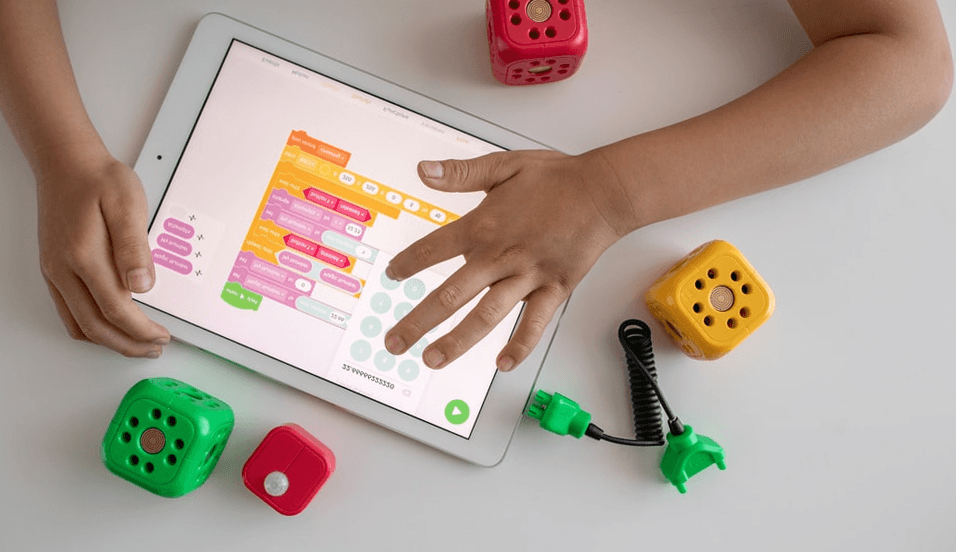Benefits of Interactive Math to Students
Updated on May 7, 2024
Math is an incredible subject; however, many students feel like it is too complicated and thus dislike it. If you notice that your students are not enjoying or not looking forward to their math lesson, you need to find some way to spice things up. An interactive math approach can help students explore the world of numbers. This article will help you make math fun and interesting with the help of interactive math tools.
What Is Interactive Math?
Interactive math is an approach where students use various interactive tools to learn and solve mathematics problems. A teacher can adopt scaffolding in education to help their class improve in mathematics using multiple tools like calculators, math games, computer programs, and other forms of interactive content that allow students to understand complicated math problems easily.
Free Interactive Math Games

You can help children to enjoy math from an early age using free interactive math games for kindergarten. You can use such games to prepare your children for kindergarten where they start a fun-filled math journey.
These math interactive games for kindergarten can help children identify whole numbers, compare different sets of objects, describe and compare shapes, as well as add and subtract.
Interactive sites for studying math
The internet plays a big role in helping parents and students with internet research as they can always access extra help with various math topics online. Students can log into multiple interactive sites for math and get assistance with almost every math concept. They will learn math in a form that is fun and educational.
Before you log into a site, it would be best to know which program or topic you want to learn. Most sites have helpful interactive math materials to build skill levels and offer assessments to sharpen math skill sets.
1:1 Math Lessons
Want to raise a genius? Start
learning Math with Brighterly
 Let’s start learning Math!
Let’s start learning Math!
Interactive Math Forms
Real Objects
The use of real objects as a form of interactive math effectively stimulates students to be active and use their five senses to solve math problems.
With encouragement from both teachers and parents, students can use real objects to develop the required skills to help them have success in life and gain confidence in math as they interact with the world around them.
The best real objects to adopt and make interactive math lessons fun include:
- Comparing objects: to help differentiate bigger, longer, lighter, smaller, shorter, and heavier.
- Sorting and classifying objects: by size, color, texture, and shape.
- Patterning: asking students questions like What comes next? Can you guess my pattern? What is the design?
- Meaningful counting: counting one at a time, skip counting, and backward counting.
The use of real objects can help children understand the idea of comparison. This helps nurture their measurement skills as they learn how to subtract while sorting things.
Classifying activities help children to think analytically and geometrically. The use of patterns enables children to think about multiplication and symmetry.
The use of objects in meaningful counting prepares students for the importance of multiplication skills and number systems at a young age and reinforces addition and subtraction skills.
The use of concrete materials can also help older learners learn new concepts that they can use to relate to whatever their teachers have taught them. It also allows them to develop their own mental models for mathematical concepts. Further, these materials can spark more interest in students in specific topics and make math more engaging.
Computers and Electronic Media
Adoption of technology offers a dynamic opportunity for instructing individual learners or entire classrooms in math. You can use computers and electronic media to enhance your student’s learning process and make concepts come alive through interactive math games and interactive math websites.
The use of certain games encourages interactive exploration and visualizations, which makes math lessons go beyond a teacher-to-student scaffolding. Games help a student learn a new concept in math, boosting their brain pathways to think mathematically.
You can apply math games in many aspects of math. For instance, a student can learn how to listen and relay information to others. Some games are tactical, they teach students to be patient, know when to make a move and when to hold back, and the physical actions involved in the game keep them active and fit.
Technological tools also provide additional opportunities for students to visualize and interact with math concepts. Therefore, they can explore and discover new ideas with games, digital tools, and simulations.
Conclusion
The use of interactive math options like technological tools helps you as a teacher to enrich your students. These concepts can help students broaden their perspectives and understanding of what they study in class and apply them in the real world to solve their everyday life challenges. It also helps them to embrace math rather than fear it.













